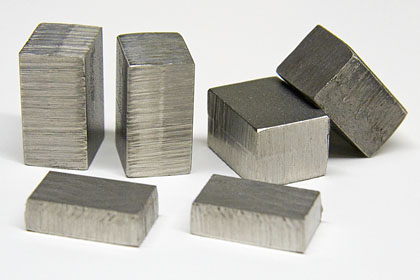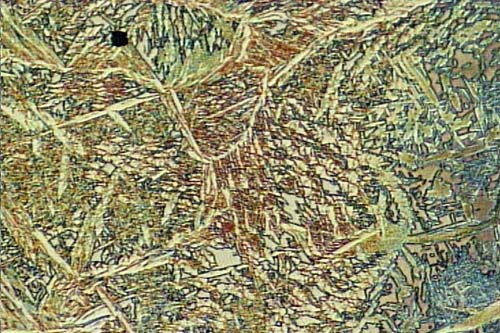Constantan Metal
Constantan is a copper-nickel alloy usually consisting of 55% copper and 45% nickel. Also known as Eureka. Its main feature is its resistivity which is constant over a wide range of temperatures. Other alloys with similarly low temperature coefficients are known, such as manganin (Cu86Mn12Ni2).
Constantan Metals
In 1887 Edward Weston discovered that metals can have a negative temperature coefficient of resistance, inventing what he called his “Alloy No. 2.” It was produced in Germany where it was renamed “constantan”.
Of all modern strain gauge alloys, constantan is the oldest, and still the most widely used. This situation reflects the fact that constantan has the best overall combination of properties needed for many strain gauge applications. This alloy has, for example, an adequately high strain sensitivity, or gauge factor, which is relatively insensitive to strain level and temperature.
Its resistivity is high enough to achieve suitable resistance values in even very small grids, and its temperature coefficient of resistance is not excessive. In addition, constantan is characterized by good fatigue life and relatively high elongation capability. It must be noted, however, that constantan tends to exhibit a continuous drift at temperatures above 65 °C (150 °F); and this characteristic should be taken into account when zero stability of the strain gauge is critical over a period of hours or days. Constantan is also used for electrical resistivity heating.
A-Alloy
Very importantly, constantan can be processed for self-temperature compensation to match a wide range of test material coefficients of thermal expansion. An alloy is supplied in self-temperature-compensation (S-T-C) numbers 00, 03, 05, 06, 09, 13, 15, 18, 30, 40 and 50, for use on test materials with corresponding thermal expansion coefficients, expressed in parts per million by length (or µm/m) per kelvin or degree Celsius or degree Fahrenheit.
P alloy
For the measurement of very large strains, 5% (50 000 microstrain) or above, annealed constantan (P alloy) is the grid material normally selected. Constantan in this form is very ductile; and, in gauge lengths of 0.125 in (3 mm) and longer, can be strained to >20%. It should be borne in mind, however, that under high cyclic strains the P alloy will exhibit some permanent resistivity change with each cycle, and cause a corresponding zero shift in the strain gauge. Because of this characteristic, and the tendency for premature grid failure with repeated straining, P alloy is not ordinarily recommended for cyclic strain applications. P alloy is available with S-T-C numbers of 08 and 40 for use on metals and plastics, respectively.
Physical properties
- Electrical resistivity at room temperature 500 n?·m
- Temperature coefficient at 20 °C 8 ppm/K-1
- Temperature coefficient -55 to 105 °C ±40 ppm/K-1
- Density 8.9 × 103 kg/m³
- Melting point 1221 to 1300 °C
- Specific heat capacity 0.39 J/(g·K)
- Thermal conductivity at 23°C 19.5 W/(m.K)
- Linear coefficient of thermal expansion at 25-105°C 14.9 × 10-6 K-1
- Tensile strength 455-860 MPa
- Elongation at fracture <45%
- Elastic modulus 162 GPa
You might also like
| Nickel Alloys Nickel and Nickel Alloys Nickel is a chemical... | Copper Alloys What are Copper Alloys ? Copperis one of... | Ancient Metallurgy Ancient Metallurgy Metallurgy is the process... | Microstructure of Metals Microstructure of Metals Microstructure... |




 Alloy Suppliers
Alloy Suppliers
 Aluminum
Aluminum
 Aluminum Extrusions
Aluminum Extrusions
 Copper-Brass-Bronze
Copper-Brass-Bronze
 Nickel
Nickel
 Magnets
Magnets
 Stainless Steel
Stainless Steel
 Stainless Steel Tubing
Stainless Steel Tubing
 Steel Service Centers
Steel Service Centers
 Titanium
Titanium
 Tungsten
Tungsten
 Wire Rope
Wire Rope